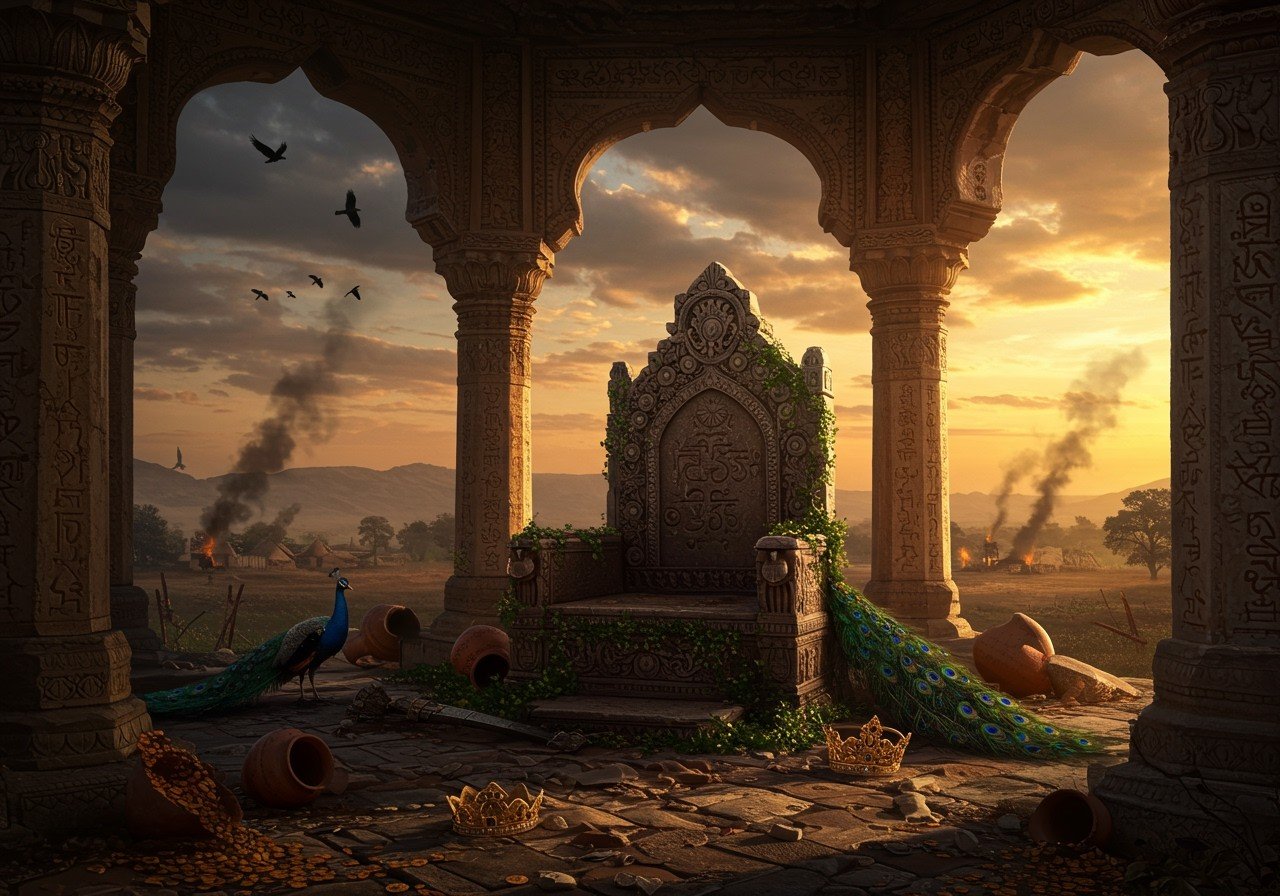
The Vakataka dynasty, renowned for its contributions to Indian art and culture, held sway over parts of central and southern India from the 3rd century to the 6th century CE. This blog post delves into the reign of the last Vakataka ruler, explores the factors that led to the dynasty’s decline by 550 CE, and examines the subsequent rulers who shaped the region’s history. Understanding these historical transitions offers valuable insights into the cultural and political transformations that have influenced modern India.
The Last Vakataka Emperor: Harishena
Harishena: A Reign of Splendor and Decline
Harishena stands as the last prominent ruler of the Vakataka dynasty. His reign, marking both the zenith of Vakataka power and the seeds of its decline, is particularly noted for his patronage of the magnificent Ajanta Caves. These caves, a UNESCO World Heritage site, are celebrated for their exquisite murals and sculptures, showcasing the artistic brilliance of the era. His support for the arts and architecture of his time significantly contributed to India’s rich cultural heritage.
Ajanta Caves: Legacy in Stone
- Patron of the Arts: Harishena’s patronage of the Ajanta Caves resulted in the creation of breathtaking works of art, showcasing intricate carvings and vibrant murals depicting Buddhist stories and teachings. His commitment to artistic expression left an enduring legacy for generations to come. These masterpieces offer a glimpse into the religious and cultural landscape of the Vakataka period.
- Architectural Marvels: The Ajanta Caves, carved into the horseshoe-shaped cliff of a gorge, represent not only artistic achievement but also architectural ingenuity. The rock-cut caves, comprising chaityas (prayer halls) and viharas (monasteries), reflect the sophisticated craftsmanship and engineering skills prevalent during Harishena’s reign. These structures stand as a testament to the Vakataka’s architectural prowess.
Administration and Military Prowess
Harishena proved himself a capable administrator, effectively managing the complexities of the Vakataka kingdom. He led successful military campaigns, expanding the dynasty’s influence and consolidating its power. Furthermore, he cultivated diplomatic relationships with neighboring kingdoms, fostering alliances and ensuring stability within the region.
Challenges and the Fall
Despite his accomplishments, Harishena’s reign was not without its challenges. Internal conflicts within the kingdom, coupled with external threats from rival powers, created an atmosphere of instability. The circumstances surrounding Harishena’s death remain shrouded in some mystery, but it is widely accepted that his passing around the late 4th or early 5th century CE created a power vacuum that ultimately hastened the dynasty’s decline.
The Decline of the Vakatakas: A Confluence of Factors
The decline of the Vakataka dynasty wasn’t a singular event but rather a confluence of factors that gradually weakened the kingdom’s foundations. By 550 CE, the Chalukyas had taken over most of the Vakataka territories.
Internal Strife and Succession Disputes
- Power Vacuum: Following Harishena’s death, succession disputes arose, weakening the central authority and fragmenting the kingdom. The lack of a clear and strong successor created political instability, making the kingdom vulnerable to both internal strife and external threats. The resulting power struggles further destabilized the kingdom.
- Weakening of Central Authority: The internal conflicts eroded the power of the central Vakataka authority, allowing local rulers and chieftains to assert greater independence. This decentralization of power weakened the kingdom’s ability to respond effectively to external threats and internal challenges, hastening its decline.
External Pressures and Invasions
The Vakatakas faced increasing pressure from external forces. Invasions by neighboring kingdoms, including the Chalukyas and the Kalachuris, further weakened the dynasty’s hold on power. These invasions not only led to territorial losses but also drained the kingdom’s resources, making it difficult to maintain stability and defend against further attacks.
The Successors and a Changing Landscape
The decline of the Vakatakas paved the way for the rise of new powers in the region. The Chalukyas established themselves as a dominant force in the Deccan, while the Rashtrakutas also emerged as a significant power. This period of transition saw a reshaping of the political map of central and southern India, with various regional powers vying for dominance.
Poojn.in: Connecting You to India’s Rich Spiritual Heritage
At Poojn.in, we recognize the profound connection between ancient dynasties like the Vakatakas and India’s spiritual heritage. Just as the Vakataka rulers supported religious practices, we empower you to continue these sacred traditions today. Explore our diverse collection of products designed to enhance your spiritual journey:
- Nail Polish for Pooja: Enhance your puja rituals with our specially formulated nail polish.
- Pure Kapoor (Camphor): Create a sacred atmosphere with 100% pure camphor, perfect for daily prayers and special ceremonies. Sourced from trusted suppliers, our camphor ensures a pure and aromatic experience.
- Incense Sticks (Agarbatti): Immerse your space in divine fragrance with our wide selection of incense sticks, crafted with traditional methods and natural ingredients. Choose from various fragrances to create a serene and uplifting ambiance.
- Rudraksha Mala: Connect with your spiritual side with authentic Rudraksha malas, known for their positive energy and healing properties. Our malas are carefully crafted with genuine Rudraksha beads.
Visit Poojn.in today to discover a wide range of puja items, sacred texts, and ritual accessories that honor India’s rich cultural heritage. Experience the convenience of online shopping while preserving the authenticity of ancient traditions.


